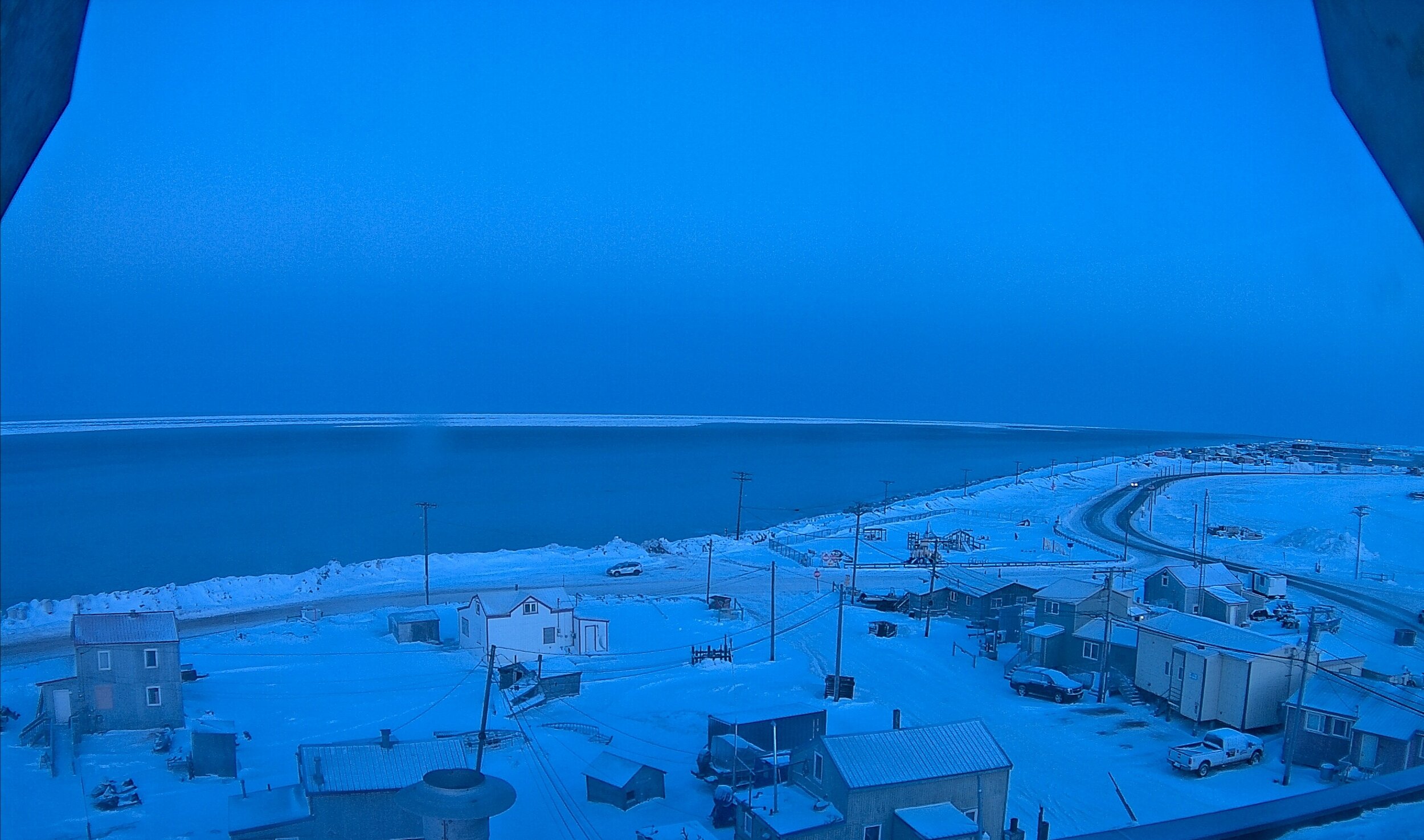The sun has set in Utqiagvik (Barrow) Alaska for the final time in 2020 and will not rise for 66 days
Utqiagvik, Alaska on Wednesday at its final sunset for 2020
Utqiagvik, Alaska (formerly Barrow) is saying goodbye to its daylight for the rest of 2020. Wednesday marked the city’s final sunset until late January 2021. Here’s how it looked on Wednesday (see above image).
Utqiagvik (Barrow) Alaska prior to its final sunset of 2020 on Wednesday, November 18. Credit: Univ. of Alaska Fairbanks Geophysical Institute
Sunset Wednesday, November 18 was 1:30 p.m. AKST. The sun will not rise for another 66 days, a period of time referred to as “polar night.” After the 66-day period of polar night, the run will rise again on January 23, 2021.
The extended darkness soon to settle in is courtesy of “polar night,” a phenomenon at high latitudes that visits the Arctic and Antarctic circles each winter. Because of Earth’s tilt on its axis, regions in the Arctic Circle can remain facing away from the sun for days, weeks or even months at a time between the fall and spring equinoxes.
The opposite is true in the summertime, when brightness reigns 24 hours a day in the “land of the midnight sun.”
On Nov. 1, Utqiagvik saw five hours and 42 minutes of daylight, the sun rising at 10:18 a.m. and setting around 4 p.m. On Wednesday, the sun was slated to be up for 34 minutes, popping up to briefly shine over the vitamin D-starved landscape around lunchtime before retiring at 1:29 p.m.
Technically the sun will never fully make it above the horizon Wednesday afternoon, but the rim of the solar disk will poke into view. The rest of the month in Utqiagvik features nothing more than a daily twilight, the sun several degrees below the horizon.
Utqiagvik will never go a day without “civil twilight,” or the azure wash of dawn that precedes sunrise when the sun is fewer than six degrees below the horizon. Until late January, however, that sunrise will never come — just a daily tease.
On the winter solstice, which falls at 5:02 a.m. Eastern time Dec. 21, the sun will still be 4.7 degrees below the horizon at noon. It will reemerge from its long slumber Jan. 23.
Two months of darkness may sound unbearably brutal, especially in a harsh climate where average December high temperatures don’t crack zero. But the same effect that leads to polar night graces the Arctic Circle with extensive daylight in the summertime. Utqiagvik will see endless daylight from May 11 through Aug. 18.
At the North and South poles, there is only one sunrise and one sunset per year. The sun rises on the spring equinox, and sets on the fall equinox. At the North Pole, that means daylight between March and September. During the fall and winter, darkness lasts six months, the only light stemming from stars, the moon and the emerald flicker of the aurora borealis.
Surprisingly, all locations on Earth see the same duration of sunlight every year, give or take a bit because of mountains, valleys and other topographical features. Utqiagvik sees about the same number of hours of sunlight as Miami, Sydney and Moscow; it all balances out. On the equator, every day is approximately 12 hours long, with seasonal fluctuations magnified the farther one heads poleward.
You can find all the latest weather warnings and forecasts by downloading our app from the google play store by clicking below















